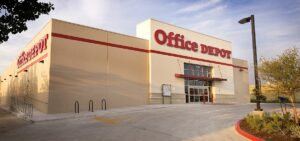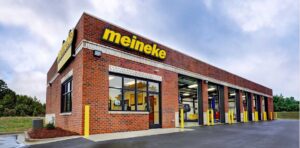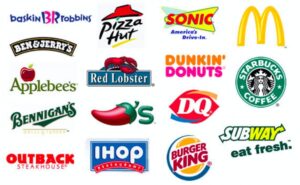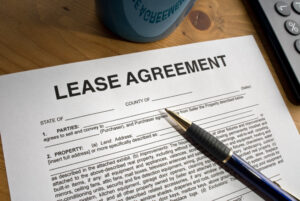Net Lease Property Value Drivers

This article discusses various factors that affect the value of net lease real estate investments. I’ve grouped the valuation topics into three main groups, 1) The Real Estate (the property itself), 2) The Tenant, and 3) The Lease.
The Real Estate
- Location:
- Visibility
- Access
- Traffic count
- Demographics
- Building age and condition
- Risk and opportunity:
- Usability of property for another tenant
- Highest and best use (redevelopment)
The Tenant
- Credit strength
- Store sales volume
The Lease
- Term remaining on lease
- Lease rate in relation to market rate
- Increases of lease rate
- Owner responsibilities (gross lease vs NN vs NNN)
The Real Estate

Location:
Investors of net lease properties are seeking safety and opportunity. A good location can offer both. A bad location can offer the opposite. Here are some brief descriptions of good and bad locations.
Visibility: First row visibility (not one or two parcels behind other properties) with good topology (not down in a hole).
Access: Easy entry and exit (perhaps at a traffic light). Left and right turns in and out of the property (no limitations on left turns in or out due to divided highways or other road conditions). If the property can catch all passing traffic with ease, it’s going to be a more successful commercial property. If it has ingress-egress issues, it could struggle.
Traffic count: The department of transportation continually updates traffic counts at various points along many roadways. Average Daily Traffic (ADT) is a key indicator of a property’s viability for commercial use.
Demographics: What is the population within the immediate area, and what level of affluence does this population possess? Measuring these factors at a 1, 3 and 5 mile radius from the property is the common measure. A property that has 20,000 people living within 3 miles, with an average household income of, say, $80,000 is going to be much more valuable in most cases than a similar property with 10,000 residents within 3 miles earning an average of $50,000.
Building age and condition:
This one is obvious. A brand-new building built with modern construction techniques and materials is more desirable and therefore more valuable than a 40-year-old building nearing the end of its useful life.
Risk and opportunity:
Ultimately an investment purchaser needs to understand the viability of the property knowing that the current tenant will eventually vacate the property.
Although net leases are typically 10+ years long and the types of tenants occupying the buildings are credit rated and strong, there is always a risk of a tenant loss. Recent high-profile bankruptcies include Payless Shoes, Sears & Kmart, Charlotte Russe, Mattress Firm and many others just in the last year. A bankrupt tenant can result in an immediate vacancy for the property owner.
For some investors, the stability of the current tenant is at the top of their list of evaluation points. They’re underwriting their acquisition based on the current lease terms and want to keep their tenant for the duration of their ownership tenure. Other opportunistic investors look beyond the current tenant and lease already in place and are seeking opportunities for redevelopment of the site to its highest and best use, or upgrades to their tenant and/or lease terms, and ultimately increases to the net income, all of which can offer greater opportunity.
This is when all of “The Real Estate” factors described above become so important. A quality property’s viability and demand from other similar tenants will save the day. A highly graded property can survive, if not thrive when a tenant vacates unexpectedly. New tenants will be waiting to take occupancy, many times at higher lease rates. On the flipside, a low-quality piece of real estate that happens to have a good net lease tenant in place can go from being a highly prized investment to a vacant liability overnight if a tenant unexpectedly vacates or chooses not to renew their lease.
The Tenant

Credit strength:
The most sought-after net lease investments are properties occupied by large national chain retail tenants or other large organizations with investment grade credit ratings. Three top agencies deal in credit ratings: Moody’s, Standard & Poor’s (S&P’s), and Fitch Ratings. Each of these agencies aims to provide a rating system to help investors determine the risk associated with investing in a specific company, investing instrument or market. The better the credit rating of the tenant, the safer the investment.
Many investment firms won’t invest in a net lease property if the tenant doesn’t have a credit rating. There are many single tenant net lease investments that are leased to companies with no credit rating. For example, a small local franchisee, or a company that just isn’t large enough to be on the credit agencies’ radar. These companies may be strong and healthy, but without an investment grade rating, many investors won’t invest.
Therefore, the highest demand and highest prices are paid for properties occupied by the strongest credit-rated tenants. Properties with weaker or smaller tenants may still be good investments but will have to offer a higher return rate (lower price) to offset the risk to the investor.
Store sales:
For retail properties, such as an automotive shop or restaurant, the store sales volume and overall performance should be evaluated to gauge the strength of the investment, and the likelihood that the tenant will continue to renew its lease. Many leases allow a landlord to request store sales reports from their tenant. Some investment buyers won’t buy a property without this data.
Each industry and retail type are different and have their own averages and benchmarks to determine what are “good” or “bad” sales numbers. A deeper knowledge of each sector is needed to gauge and compare the sales reports once they’re obtained.
The Lease

Remaining Lease Term:
The length of time remaining until the tenant has the right to vacate is a big factor. Most leases have additional tenant option periods beyond the initial term, but these option terms should be de-emphasized if not ignored when evaluating the asset since there is no guarantee that the tenant will exercise its option to extend the lease. Many net lease properties begin with a lease term that is anywhere from ten to twenty-five years. Even with all other terms looking great, if a lease only has a few years remaining, certain buyers won’t buy the property. Many investment companies have very rigid criteria that include a long-term internal rate of return model that projects income over many years. An expiring lease, and the prospects of a vacancy don’t fit with this type of model and buyer. Every sector of the buyer pool that’s eliminated from potentially purchasing the property diminishes its demand and therefore potentially lowers its value.
Other the other extreme, a different breed of buyer is one that looks for ways to boost its return by seeking value-add opportunities. One of those opportunities is to find properties that have expiring leases and that are rented below market rent rates. In this situation, if the property is in a strong location that is easily leased, the buyer can purchase for a market cap rate, possibly even a discounted cap rate due to the short-term lease, then raise the rent either with the existing tenant or a new tenant and bolster the value of the property way beyond their original purchase price.
Lastly, and probably the most difficult to value, is a property with a lease term somewhere in between short and long term – say, three to seven years. The lease isn’t quite long enough to meet the stringent demands of the first extreme buyer and is not short enough to completely ignore the cash flow and value the property based on its lease potential to a new tenant. Typically, the shorter the remaining lease, the lower the value assuming all other factors are equal.
Lease rate in relation to market rate:
As described above, when you begin to approach the end of a lease term, or if you have a tenant whose financial situation is shaky (such as bad earnings reports and threats of bankruptcy), knowing the market rent rate of the property is critical. With long term leases, it’s possible to see a property with an extremely high rent rate that was originated many years ago when conditions were better. The property’s location may have declined, or the tenant may have fallen into hard times (think Kmart or Sears). In this situation, knowing what the market lease rate is can help to determine if the property has hidden upside due to being leased below the market rates, or if the property has hidden danger due to being leased way above what any tenant would be willing to pay in today’s market. The ugly worst case is a situation where a landlord loses a trophy tenant and a high rent rate, and due to changes to the area, is not able to attract another tenant at all, and ends up with a vacant building, or a mom n pop tenant that can only pay a fraction of the prior lease rate. In this situation, the property value can plummet, never to return.
Rate increases during current term:
Rate increases can be overlooked but are extremely important, especially in an inflation era. A lease that has no increases over the course of ten or fifteen years is obviously less attractive to a cash-flow investor than a lease with increases. And further, annual increases that can compound rather than increases that happen every five years can make a big difference over the long haul.
Landlord responsibilities (NN/NNN):
The most ideal net lease is one the requires the landlord to do absolutely nothing in terms of property maintenance. The tenant is not only responsible for paying property taxes and insurance, but they’re also 100% responsible for building maintenance (triple net). This situation is highly attractive to certain purchasers. In fact, some purchasers won’t consider purchasing anything except NNN leases. They’re not setup to manage maintenance requests and simply don’t want the hassle. A double net lease (NN) requires the landlord to fix certain parts of the property when they break and is less desirable. The hassle factor and the unknown financial consideration typical cause valuations of NN leases to be lower than NNN with all other factors being equal.
Risks, pitfalls, tenant options:
The fine print of the lease must be read. There can be all kinds of risks that could have an impact on the property’s value. Here are a few examples:
Tenant option to terminate: Your tenant may have an option to terminate the lease early, either for no reason at all, or based on certain events, such as business volume at the location. This could turn a long-term lease into a short-term lease and heavily impact the property’s value.
Sale of franchise at your location: You may have a large franchisee operator as a tenant. This operator may operate hundreds of franchises and may offer the kind of financial strength that even very picky purchasers demand. However, the tenant may have the option to sell the franchise at your location to another operator – like a brand new operator with just one location – and transfer all the lease obligations to the new franchisee. In this situation you could go from having an all-star tenant to a very weak tenant. This would greatly diminish the value of the property.
Summary:
As you can see from all the details above, valuing a net lease property is not simple, and takes a depth of knowledge and thorough analysis. There are many types of buyers, each with their own criteria. A property could be a perfect fit for one but may not be a fit for another. A property can appear to be a great investment on the surface but could have hidden risks that could greatly impact its value in the future. And a property may appear to be weak but could have hidden potential.
Feel free to contact me if you have a question or a need related to net lease or commercial investment property.
Thanks for reading,
Chad Manion
Broker
Manion & Company
[email protected]
(770) 778-5904
